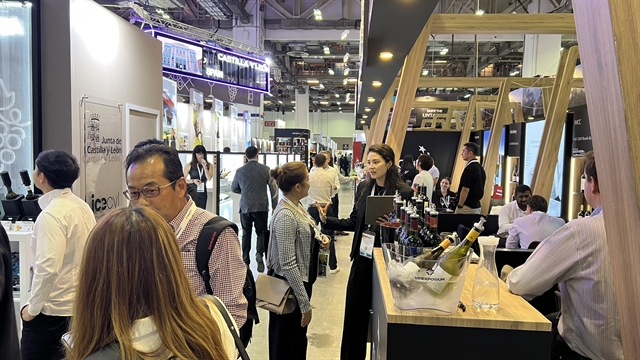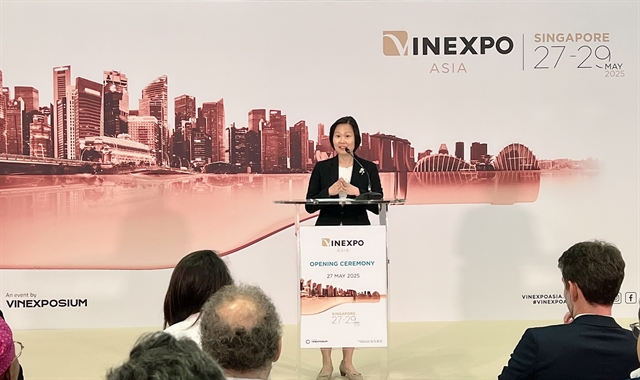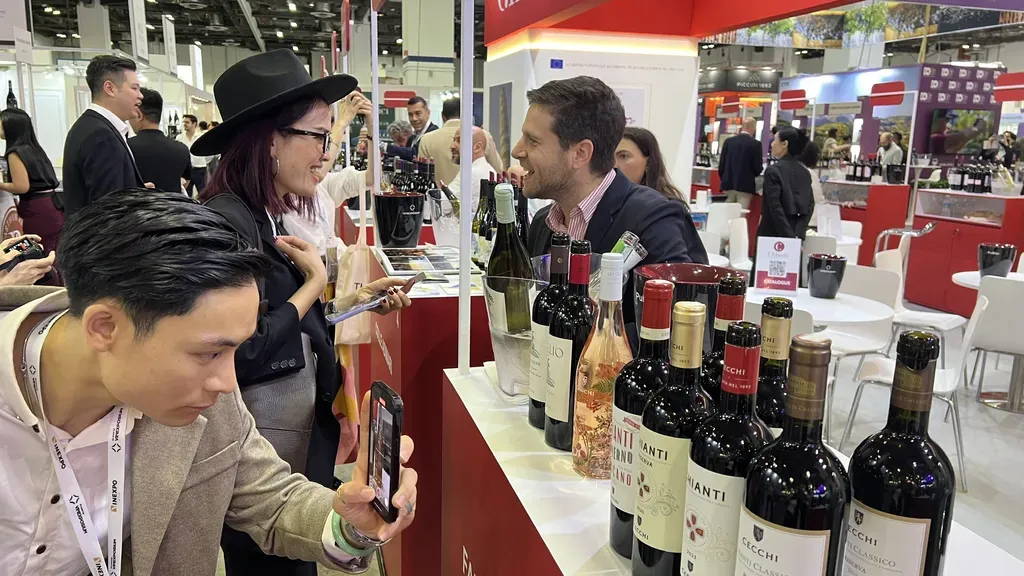 Economy
Economy

 |
| Visitors at the Vinexpo Asia 2025 on May 27. — VNS Photo Mai Hương |
By Mai Hương
SINGAPORE — Vinexpo Asia 2025, a leading platform for the wine and spirits industry in Asia, officially opened its doors on May 27 at Marina Bay Sands, Singapore.
The three-day exhibition brings together global stakeholders for high-level business exchange, industry insights and strategic networking.
Organised by Vinexposium, this year’s edition features over 950 exhibitors from more than 20 countries and is expected to welcome 11,000 trade specialists from 70 countries and territories.
Key features of the event include the Vinexpo Academy, which will offer exclusive market insights and expert discussions throughout the three days.
In the opening ceremony, Rodolphe Lameyse, CEO of Vinexposium, said: “The world is evolving rapidly, and our wine and spirits industry is no exception.
“Younger generations are drinking differently, reconsidering their relationship with alcohol and how it fits into their lives. At the same time, climate disruption and new regulations are transforming how we grow, trade and communicate about wine and spirits.”
He highlighted Southeast Asia’s growing strategic role in the industry development, especially as it now alternates between Hong Kong and Singapore.
“Southeast Asia is emerging as one of the most dynamic growth markets. Here in Singapore, we see a young, fast-moving economy with great potential. That is why Vinexposium, through events like Vinexpo, provides more than just a gathering point – it is where strategies are shaped.”
Singapore’s Minister of State for Foreign Affairs and Trade & Industry, Gan Siow Huang, acknowledged the uncertain global trade environment and reaffirmed Singapore’s commitment to keeping trade open and rules-based.
“Trade tensions and protectionist measures are threatening to unravel the international trade system that we have built over decades. For small producers and traders – many of whom are here today – these challenges can be existential,” she said.
Singapore, she noted, has responded by deepening international cooperation, including the recently enforced Pacific Alliance–Singapore Free Trade Agreement. The country now holds 28 free trade agreements which aim to strengthen economic resilience.
 |
| Singapore’s Minister of State for Foreign Affairs and Trade & Industry, Gan Siow Huang, speaks at the event. — VNS Photo Mai Hương |
She also pointed to Southeast Asia’s growing importance, with its population of over 600 million and a rising middle class. The region is projected to become the world’s fourth-largest economy by 2030.
“Alcoholic beverage revenue in Southeast Asia is projected to grow by around 10 per cent compared to levels seen just two years after the pandemic,” she noted. “This growth is being driven by younger consumers, many of whom are open to trying new experiences – including low or zero alcohol options.”
Singapore, while not a traditional wine-producing nation, is now among the world’s largest importers and the fourth-largest exporter of wine and spirits. Its domestic market is also thriving, with wine revenue forecast to grow by over five per cent annually through 2030.
“I encourage everyone to seize the opportunities while in Singapore and at Vinexpo, and to explore ways to tap into the growing demand across Asia. With the Asia-Pacific wine and spirits market expected to grow at 6.85 per cent annually until 2030, we can be optimistic about the future,” she said.
Việt Nam’s potential
Việt Nam is one of the most promising markets in Asia, despite some concerns regarding the proposed tax hikes on alcoholic beverages scheduled for 2030.
The managing director of Sinowine, a Hong Kong-based wine and spirits consultancy, Rob Temple, noted that Việt Nam is now among the region’s top consumers of alcohol on a per capita basis. He attributed this rising demand to the country’s rapid economic development, youthful demographic and growing GDP per capita.
However, he also emphasised that accessibility, consumer education and cultural relevance remain essential to sustaining growth in the wine sector.
Việt Nam’s evolving wine culture is also being observed by industry insiders.
An executive board member of the Vietnam Sommelier Association, Phương Maxy, described a noticeable shift in consumer behaviours as the country undergoes both economic and cultural transformation.
“As living standards and income levels rise, Vietnamese people are increasingly drawn to a more lifestyle-oriented approach, where wine plays an important role. I’ve seen a noticeable trend – more people are not only drinking wine, but exploring a broader range of varieties,” she told Việt Nam News.
 |
| Phương Maxy (wearing a hat), an executive board member of the Vietnam Sommelier Association, visits a wine booth at the event. — VNS Photo Mai Hương |
She explained that wine offers a middle ground between beer and spirits – bringing health benefits, a rich cultural history and a growing appeal among younger, trend-conscious consumers.
“The country’s young population is highly responsive to cultural trends and now plays a defining role in shaping the wine market.”
With Việt Nam’s food and beverage sector gaining global attention – including accolades from Michelin and the entry of international wine awards – Phương believes wine will help elevate the country’s culinary reputation.
“Wine is no longer just an alcoholic drink. It’s a bridge to modern lifestyles and cultural exchange,” she said. — VNS




